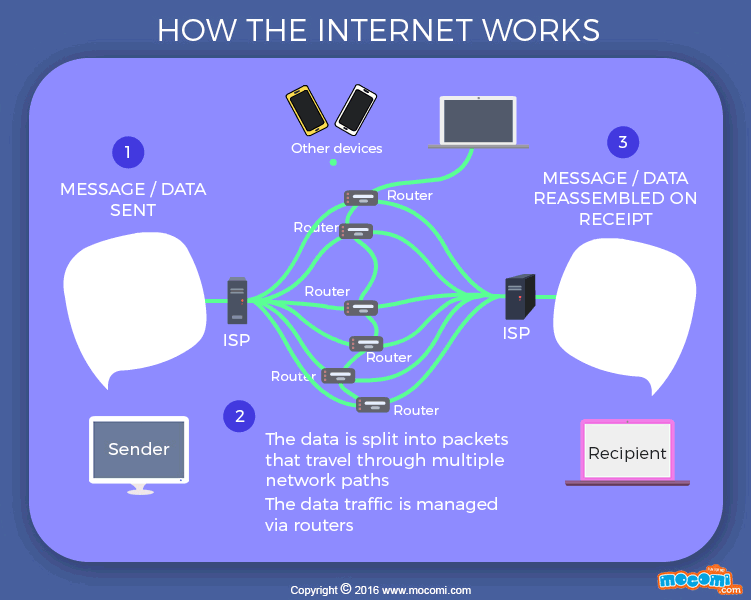Whether we want to talk to our friends via email or instant messaging, shop, book movie tickets, or even read and research, the internet makes our lives much easier. It’s hard to imagine a world without the ease and convenience of the internet. It’s a wonderful technology that has extended to most areas of our lives. But how does this technology work? Have you ever wondered?
What is the Internet?
Simply put, the internet is a global collection of networks of computers connected to each other. These networks allow data to be transferred between the computers/devices connected to them. This exchange of data is possible only because all the computers on the network play by the same set of rules, called the Internet Protocol (IP).
How does this Global Network called the Internet Work?
Be it for a Google search for your favorite movie, or an email to a friend, what’s essentially happening when you use the internet is that you’re sending a message from your device to another device. Thus, when you use the internet, what you’re doing is sending and receiving messages (requests) to and from other computers and devices on the network.
Data Transmission on the Internet
The computers and devices that we use are called clients and the computers that websites such as Google or Facebook use are called servers. The websites we access are all files on the hard disks of the respective servers. Our devices do not directly access these files. When we access google.com for example, our client device forwards its requests to Google servers via our internet service providers (ISPs). The results also come to us via our ISPs. Which is why we cannot access the internet if our connection to our ISPs gets terminated.
Also, these messages and requests aren’t sent or received as a whole. Any time you use the internet, your message is broken down into units called “packets” that travel through the network to its destination. Upon arrival at the destination, the packets are put together in the original order. You can think of a packet as a chunk of your message / query. Or like a part of a jigsaw puzzle that needs to be solved at the destination. If for some reason the packets aren’t put together in the right order at the right time, the results are in the form of distorted content. Like when a video lags, or a web page doesn’t load properly.
But there are millions of people and devices accessing the internet at any given time. Which means countless packets of data. So how do these packets of data find their way to their intended destination? Every device connected to the internet has its own unique I.P address which acts as the postal address does in the physical world. And to make the data flow smoother and avoid data traffic jams, there are routers. Routers sort the packets based on their destination and ensure that they end up on the right device and not on other devices on the network.
So does anyone own the Internet?
Most of the data that is exchanged on the internet flows through internet exchange platforms. These platforms serve all kinds of organizations, including internet service providers, social media, universities, companies, publishers, telecom providers etc. By using an internet exchange platform, these organizations can achieve faster exchange of information at lower costs. So basically, the internet works because of mutual agreement of several organizations all over the world to share and exchange data using the same set of rules. So no one organization owns the internet.


